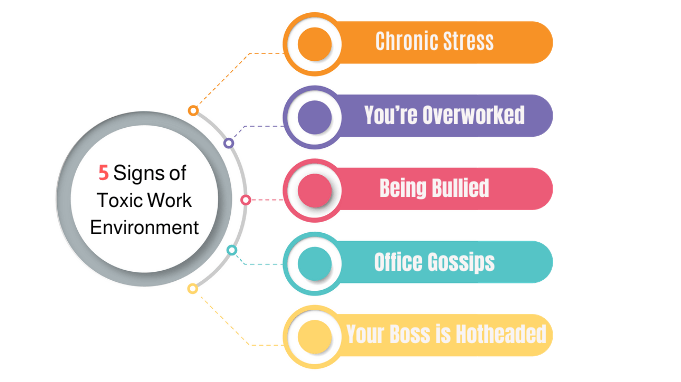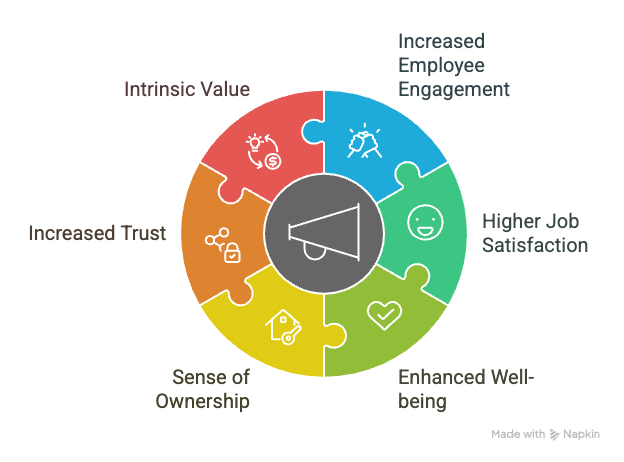Workplace loneliness is becoming an increasingly urgent issue, affecting employees’ well-being, job satisfaction, and productivity. The 2024 Work in America survey by the American Psychological Association highlights a striking finding: 45% of employees aged 18-25 feel lonely at work. As workforce demographics evolve, this highlights a critical gap in workplace culture, one that leaves many employees feeling disconnected and unsupported.
Loneliness at work can stem from various factors, including remote work, lack of social interactions, or an unsupportive work environment. However, both organizations and individuals can take proactive steps to combat isolation. Employers can foster inclusivity, encourage team collaboration, and provide mental health resources, while employees can focus on building connections, engaging in meaningful activities, and setting healthy boundaries.
By addressing workplace loneliness at both the management and individual levels, we can create environments where employees feel valued, engaged, and connected, ultimately leading to happier, more productive workplaces.
Table of Contents
What Does Workplace Loneliness Look Like?
Feeling lonely at work can manifest in several ways. You might sense a disconnect from your colleagues, struggling to find the right words to say or feeling like you’re not on the same wavelength. There may be a nagging sense of isolation, as if your efforts exist in a bubble, unnoticed and disconnected from the bigger picture.
At times, you might feel unappreciated or that your contributions go unrecognized, leaving you disheartened. This sense of distance can also make it hard to seek help from colleagues or offer support in return, further deepening the divide. These feelings are subtle but powerful reminders of the importance of meaningful workplace connections.
Causes of Workplace Loneliness
Workplace loneliness can be attributed to several important factors.
Workplace Relationships
To reduce loneliness, meaningful social interactions are essential. Despite regular contact, many employees struggle with forming close. Having a support system at work in the form of solid friendships can make all the difference.
Management Style
One of the most important factors influencing workplace loneliness is the nature of the interactions that exist between managers and staff. Even those employees who are on good terms with their managers often feel lonely if those conversations are shallow or emotionally disconnected. Compassionate and humorous leadership styles are linked to reduced levels
of loneliness in teams.
Workplace Control
Feelings of loneliness among employees are strongly influenced by their sense of control over their employment. These feelings can be exacerbated by a misalignment between personal skills and job tasks as well as a lack of decision-making authority.
Organization Culture
A work environment that prioritizes individualism, competitiveness, and excellence may make employees feel alone. Bullying and fear-based cultures further erode a sense of community, which can make loneliness worse. On the other hand, companies with an inclusive culture and healthy relationships make people feel like they truly belong.

Remote Work Dynamics
New issues have arisen as a result of the move to remote employment. Some workers may feel alienated, particularly if they began their jobs remotely without the customary onboarding contacts, but others may flourish in remote environments with sufficient assistance.
Job Type & Security
According to research, compared to people in permanent jobs, temporary contract workers frequently experience higher degrees of loneliness. Job uncertainty has a detrimental impact on overall job satisfaction and might intensify feelings of loneliness.
Impact of Workplace Loneliness
Let’s take a look at the various ways workplace loneliness can impact people.
Interpersonal Relationships
Loneliness triggers emotional disengagement. People stop conversing, exchanging messages, and taking part in group-work-related activities. In turn, other staff members stop involving them in events and decisions. Healthy peer connections are disrupted, and internal conflicts may result.
Mental Health
NCBI cites loneliness as a major risk factor for developing mental disorders. Depression, anxiety, and, in severe situations, suicide can result. Lonely people frequently feel cut off from or alienated from others around them. They believe that no one cares about them, doesn’t understand them, or doesn’t like them. They experience a great deal of uneasiness and self-doubt.
Physical Health
Research has linked loneliness with the increased risk of developing heart disease, stroke, and type 2 diabetes. To cope with the negative emotions, people often turn to alcohol and drugs. This can lead to physical and psychological dependence, blackouts, poisoning, overdose, and death in severe cases. Such addiction can cause severe damage to vital organs such as the heart, brain, and liver.

Job Performance
Nothing piques the interest of employees who are lonely at work. Their job eventually suffers as a result of their lack of attachment and emotional connection to others. They are not inspired to work, and they do not enjoy what they do. Employees may labor for a while even when they are not interested. But for a longer duration, it’ll cause burnout and eventually result in a decline in performance and productivity.
Turnover
Long-term workplace loneliness may even lead to an employee’s decision to leave the company. They are less motivated to work and perform because they don’t feel a connection to their job. They might believe they have no purpose in the organization and opt to quit.
How to Overcome Workplace Loneliness
Workplace loneliness can impact employee morale, engagement, and productivity. Addressing this requires a combined effort on both a management level and an individual level. Below are practical strategies to create a more connected and supportive work environment.
Management Level Efforts
Here are some ways to promote teamwork and collaboration among employees:
Foster Team Spirit and Collaboration
Encouraging teamwork through group projects, team-building activities, and shared goals can help employees feel more connected. Organize regular team lunches, retreats, or casual virtual meetups that allow employees to bond beyond work tasks.
Creating mentorship programs or peer support groups encourages deeper professional relationships and a sense of belonging. Recognize and celebrate team achievements to improve morale and reinforce a collaborative work culture.
Promote Inclusivity
Creating an inclusive work environment where everyone feels valued can help reduce isolation. Organizations should provide gender-neutral restrooms, lactation rooms, and prayer or meditation spaces.
Digital inclusivity is also essential, ensuring remote employees have equal participation in meetings and decision-making while allowing individuals to express their identities. Using appropriate pronouns helps create a respectful environment by acknowledging and affirming individuals’ gender identities. It allows people to feel recognized and valued for who they are, reducing the risk of misgendering.
Encourage Feedback
Employees are less likely to feel lonely when they believe their voices matter. Leaders should regularly seek employee feedback through surveys, suggestion boxes, or open forums. Involving employees in decision-making processes and ensuring their ideas are considered can create a greater sense of belonging.
For example, Adobe encourages employees to participate in shaping company policies through its “Kickbox” innovation program, where employees contribute ideas that help improve the workplace.

Address Negative Behaviors
Workplace loneliness can worsen if employees feel excluded due to bullying, harassment, or a lack of respect. Companies should have clear policies on workplace behavior and take swift action to resolve conflicts. Leadership should model positive interactions and encourage an open-door policy where employees feel comfortable discussing concerns.
Provide Mental Health Support
Organizations should prioritize employee well-being by offering access to counseling services, mental health apps, and wellness programs. Employee Assistance Programs (EAPs) provide confidential support for those struggling with stress or loneliness.
Offer Flexible Work Arrangements
Providing employees with remote work options, hybrid schedules, or flexible hours can help them balance their professional and personal lives while maintaining social connections. Companies like Google and Microsoft have successfully implemented hybrid work models, allowing employees to collaborate in person while still enjoying flexibility.
Individual Level Efforts
Here are some ways to build connections and find fulfillment at work:
Build Connections
If you’re feeling lonely at work, take small steps to build connections. Introduce yourself to colleagues, engage in casual conversations, and participate in workplace activities. Instead of waiting for others to reach out, take the initiative to interact with colleagues. Invite a coworker for coffee, suggest a lunch meetup, or join team outings. If your company has mentorship programs or employee resource groups, consider joining them.
Engage in Fulfilling Activities
Loneliness at work isn’t just about a lack of social interaction; it can also stem from feeling unfulfilled or disconnected from your work. Engaging in activities that bring you joy and a sense of purpose can help shift your focus and improve your overall well-being.
Consider taking on projects that excite you, such as leading a new marketing campaign, developing a product feature, or volunteering for a company-wide initiative. Set personal goals like improving your public speaking skills, completing an online certification, or learning about a new digital tool relevant to your role.
One of the best ways to overcome loneliness is to shift your focus toward helping others. Mentoring a junior employee, offering to assist a coworker, or volunteering in community initiatives can help you develop a sense of purpose. Acts of kindness not only benefit others but also create meaningful interactions that reduce feelings of isolation.

Set Healthy Boundaries and Prioritize Self-Care
Loneliness can sometimes stem from burnout or a lack of work-life balance. Avoid comparing your social life to others’ and focus on what makes you feel fulfilled. If large social gatherings feel overwhelming, opt for one-on-one interactions or smaller groups. Make time for self-care by practicing mindfulness, taking breaks, and engaging in activities that recharge you.
Break the Silence!
Workplace loneliness is a challenge that can impact mental health, job satisfaction, and overall productivity. However, with the right strategies, both organizations and individuals can create a more connected and supportive work environment. Companies can encourage collaboration, provide mental health resources, and promote inclusivity, while individuals can take proactive steps to build relationships, engage in fulfilling activities, and contribute to their community. By prioritizing connection and well-being, workplaces can transform into spaces where employees feel valued, supported, and truly connected.
Looking for more solutions to improve your work environment? Explore our blogs on EvolveDash for fresh insights and practical tips to address workplace issues and enhance team dynamics!
FAQs
Why is workplace loneliness a problem?
Workplace loneliness can lead to decreased productivity, low job satisfaction, and even mental health challenges like stress and anxiety. It can also affect collaboration and teamwork, making it harder for employees to engage with their colleagues and contribute effectively.
How can I tell if I’m experiencing workplace loneliness?
Signs of workplace loneliness include feeling disconnected from your colleagues, lacking motivation, avoiding social interactions, or experiencing stress due to isolation. If you often feel left out or struggle to engage in workplace conversations, you might be dealing with loneliness.
How can remote workers overcome loneliness?
Remote workers can combat loneliness by participating in virtual team meetings, joining online workplace groups, scheduling video calls with colleagues, and working from co-working spaces occasionally. Setting up casual virtual hangouts and maintaining a structured daily routine can also help maintain social connections.
What can managers do to help employees feel more connected?
Managers can create a more connected workplace by fostering open communication, organizing team-building activities, encouraging mentorship programs, and addressing workplace conflicts. Regular check-ins and recognizing employees’ contributions also help build a supportive and inclusive work culture.



















